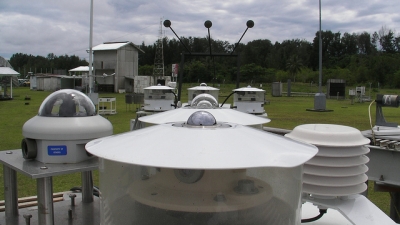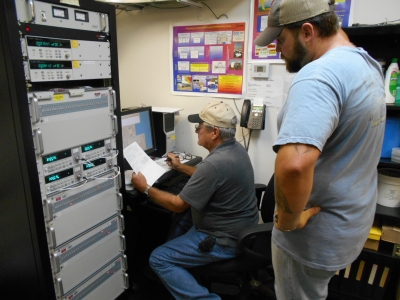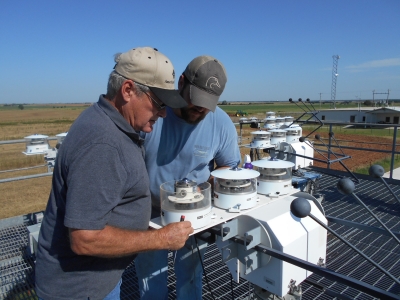Calibration Season Begins
Published: 5 October 2015
Editor’s Note: Craig Webb, calibration technician at the Southern Great Plains site, sent this update.

The ARM Climate Research Facility requires accurate measurements of solar radiation from radiometers used in ground-based networks and airborne instrument platforms. These measurements are needed to evaluate and improve the mathematical description of radiative transfer processes simulated in global climate models used to predict climate change. The Radiometric Calibration Facility (RCF), located at the Southern Great Plains (SGP) ARM site operated by Argonne National Laboratory, now provides shortwave radiometer calibrations traceable to the World Radiometric Reference. The RCF is a collaboration between the National Renewable Energy Laboratory (NREL) and the ARM Facility.

Beginning in July, the team began the precision infrared radiometer (PIR), also known as a pyrogeometer, calibrations. The RCF is designed to simultaneously calibrate up to 11 PIR radiometers in outdoor conditions similar to those the field instruments would experience in routine monitoring.Instruments calibrated at the site include:
- pyrheliometers, also known as NIPs, which are used to measure direct (beam) solar irradiance;
- pyranometers, also known as PSPs, which have a hemispheric (fish-eye) field of view and are designed to measure the total direct and diffuse (sky) solar irradiance on a flat surface; and
- pyrgeometers, also known as PIRs, which are similar to pyranometers, but have an outer blocking filter to eliminate the high energy solar irradiance and measure only the longwave, thermal (or infrared) radiation from the atmosphere.

The process to calibrate the PIRs takes about 3 to 6 weeks to complete, and can only occur at night between dark and dawn. The nighttime weather provides a good mix of cloudy nights and unpredictable conditions. Downtime is less than ever before due to this new capability being added to the SGP site.
The team is working on a total of 15 instruments, one of which will be a measurement assurance standard, one control standard, and two reference standards. After the calibration period is complete, only 11 precision infrared radiometers will be ready for the field—if they all pass testing data. Instrument calibrations at SGP are now planned on an annual basis.
The ARM Climate Research Facility is a DOE Office of Science user facility. The ARM Facility is operated by nine DOE national laboratories, including .
Keep up with the Atmospheric Observer
Updates on ARM news, events, and opportunities delivered to your inbox
ARM User Profile
ARM welcomes users from all institutions and nations. A free ARM user account is needed to access ARM data.


















